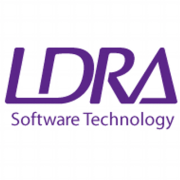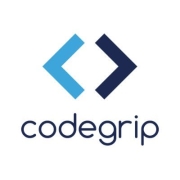Static Code Analysis involves examining source code to detect bugs and vulnerabilities without executing the program, enhancing security and reliability. It helps developers catch errors early in the development cycle, ensuring high-quality software delivery.
Static Code Analysis solutions provide automated tools that scan codebases for possible errors, ensure adherence to coding standards, and identify security vulnerabilities. These tools typically integrate seamlessly into development workflows, offering real-time feedback to developers, thereby promoting efficient code improvement processes.
What are the critical features of Static Code Analysis tools?In industries like finance and healthcare, Static Code Analysis helps meet strict regulatory requirements by ensuring that software complies with industry standards. This reduces risks associated with data breaches in these sensitive sectors and builds trust with stakeholders.
Static Code Analysis is beneficial for organizations as it boosts software quality and security, while facilitating early detection and resolution of code issues, aligning with best practices in software development. This preemptive approach fosters safer, more reliable product releases.
| Product | Market Share (%) |
|---|---|
| Veracode | 21.2% |
| Checkmarx One | 13.9% |
| OpenText Static Application Security Testing | 9.8% |
| Other | 55.099999999999994% |

















































Static Code Analysis offers several key benefits for software development. It helps identify code defects early in the development cycle, leading to reduced debugging costs and improved software quality. You'll benefit from increased code consistency and reduced code churn by detecting potential security vulnerabilities and coding standard violations before code deployment. Additionally, these tools integrate seamlessly into your development environment, promoting best practices and encouraging team collaboration, enhancing your productivity.
How can Static Code Analysis improve code quality?Static Code Analysis enhances code quality by systematically examining source code against standards and guidelines. It makes you aware of code inefficiencies, redundant patterns, and potential errors, thereby improving maintainability. Tools alert you to common programming mistakes and security vulnerabilities, which ensures that the delivered software is robust and reliable. By incorporating feedback from these tools, you can create cleaner, more maintainable code, resulting in more reliable software that is easier to update and enhance.
What are some common tools used for Static Code Analysis?Several tools are popular for Static Code Analysis. Some of the most used include SonarQube, Checkmarx, and Coverity. SonarQube provides comprehensive dashboards and supports multiple languages, allowing you to visualize code metrics effectively. Checkmarx is well-regarded for its ability to identify security vulnerabilities, making it a preferred choice for security-conscious development. Coverity offers deep code analysis capabilities and integrates well within existing workflows, providing actionable insights that enhance code quality and security.
How does Static Code Analysis fit into a CI/CD pipeline?Integrating Static Code Analysis into a CI/CD pipeline ensures continuous quality assurance. As code changes are committed, analysis tools automatically evaluate the code, providing immediate feedback. This process helps catch defects early and allows you to enforce code standards without manual checks. Using thresholds and reports, it ensures only code meeting defined quality criteria can progress through to further stages, which significantly reduces the likelihood of faulty code making its way into production environments.
What challenges might developers face with Static Code Analysis?While Static Code Analysis offers significant benefits, developers may encounter challenges such as false positives, where the tool flags issues that aren't actual problems. This can lead to wasted time if not managed correctly. Overwhelming reports can also occur when first implementing these tools, as they highlight many existing code issues. To address these challenges, prioritize critical issues and gradually address lower-priority ones, thereby refining algorithms and rule sets to better match specific project needs, aiding workflow management and reducing friction in development processes.